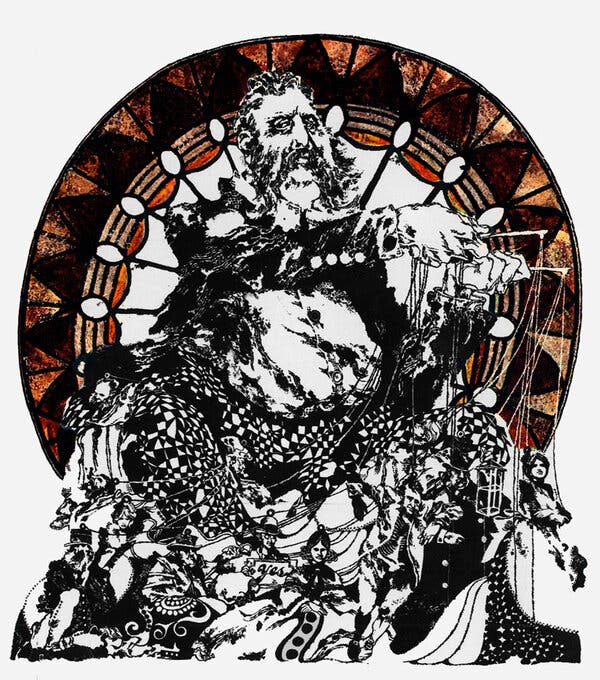Brad Holland, 81, Dies; His Subversive Art Reinvented Illustration

Brad Holland, an idiosyncratic artist who upended American illustration in the 1970s with his startling imagery for Playboy magazine and The New York Times’s opinion page, spawning a generation of imitators, died on March 27 in Manhattan. He was 81.
His brother, Thomas, said he died in a hospital from complications of heart surgery.
Mr. Holland was in his late 20s and contributing to Playboy and a few of New York City’s underground papers, including The New York Review of Sex and Politics and The East Village Other, when he was invited to be part of an experiment at The Times.
In 1970, the paper had introduced what it called an Op-Ed page — the name referred to its placement opposite the editorial page — as a forum for essays and ideas. The art director of this new page, Jean-Claude Suares, was another veteran of the underground presses; while working at The Times, he was also designing Screw magazine.
Advertisement
SKIP ADVERTISEMENT
For The Times, Mr. Suares wanted to commission standout art to accompany the writing, but he didn’t want to illustrate the themes of the articles literally. He was an admirer of Mr. Holland’s work and recruited him, along with other notable insurgents, including Ralph Steadman, the British caricaturist who had been illustrating Hunter Thompson’s gonzo adventures, and a coterie of European political cartoonists.

One of three illustrations for a 1968 essay by P.G. Wodehouse, “The Lost Art of Domestic Service,” that were Mr. Holland’s first assignment for Playboy magazine. He would work for the magazine for a quarter-century.Credit…Brad Holland/Artists Rights Society (ARS), New York
Mr. Holland had already attracted attention with the gorgeous rococo images he made to illustrate Playboy’s “Ribald Classics,” a series that reprinted erotic stories by the likes of Ovid, Jonathan Swift and Mark Twain. His work could be surreal, grotesque and beautiful, and it was often inscrutable. It recalled the satirical engravings of the 19th-century caricaturist Thomas Nast and the more terrifying paintings of Francisco Goya.
Subscribe to The Times to read as many articles as you like.



